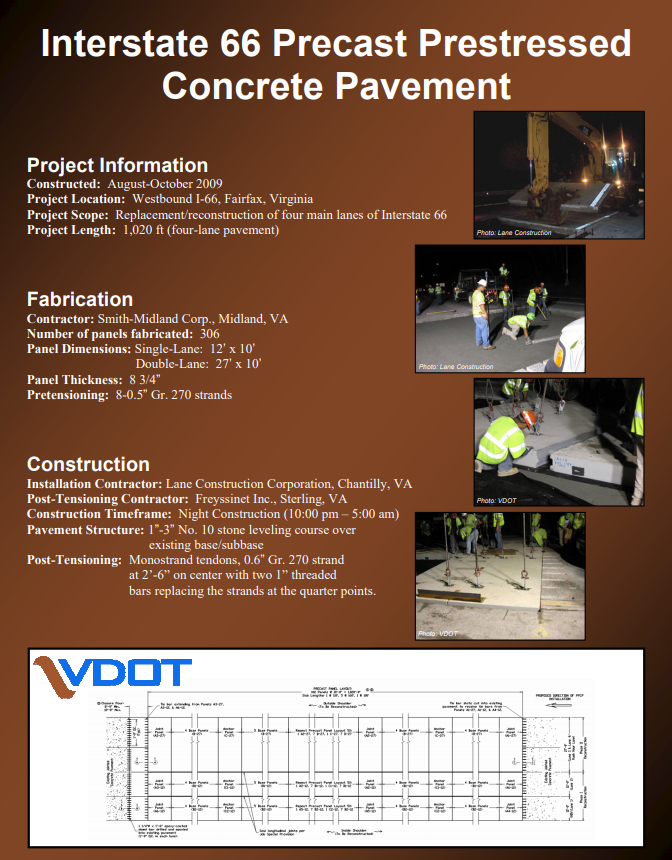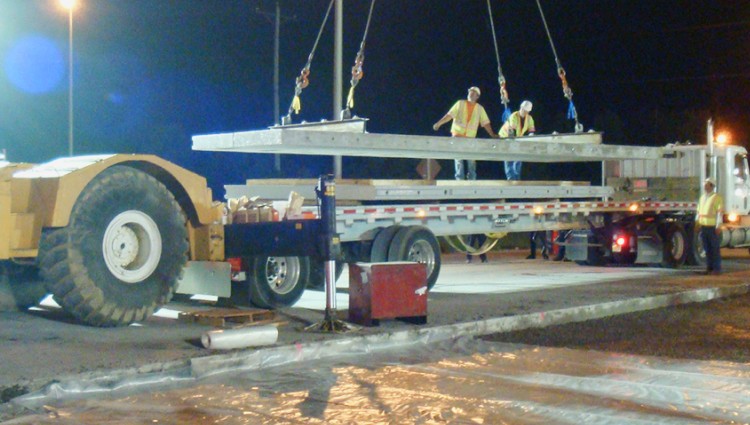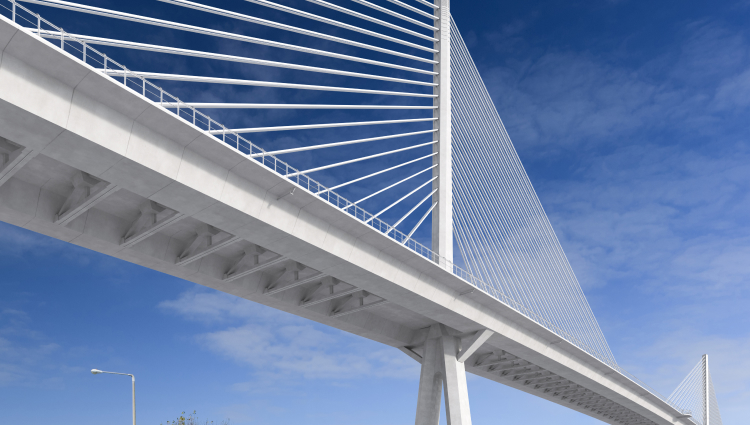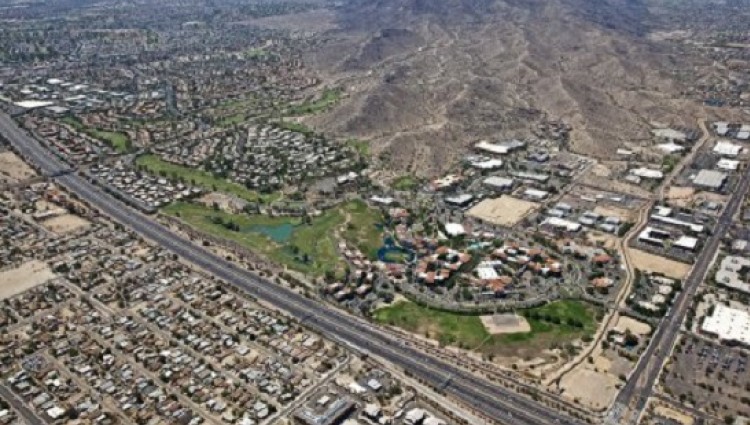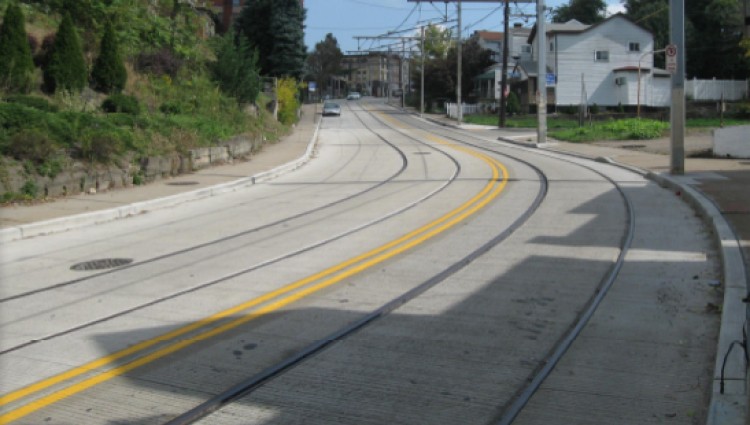The Virginia Department of Transportation (VDOT) chose to implement precast prestressed concrete pavement (PPCP) for the first time on Interstate 66.
As part of FHWA’s Highways for LIFE program, Transtec worked with VDOT to develop a PPCP design to reconstruct a section of westbound Interstate 66. This project demonstrated the use of PPCP for overnight reconstruction of a heavily traveled pavement section just outside Washington DC. Crews were able to complete all construction between 10 pm and 5 am each night, minimizing the impact of lane closures on the traveling public.
All four lanes of the pavement were reconstructed. Lanes one and two were reconstructed simultaneously with single-lane precast panels (12-foot wide) across a crowned cross-section. Lanes three and four were reconstructed with a single 27-foot double-lane precast panel. The panels were installed over a VDOT #10 stone base graded by hand to the required cross slope and grade. Threaded post-tensioning bars were used to sequentially post-tension the precast panels as they were installed. Temporary post-tensioning was provided at all times, even when the pavement was open to traffic prior to final post-tensioning. The I-66 project also included reconstruction of a section of ramp pavement from I-66 WB to US 50 WB using a proprietary jointed precast pavement system.
Transtec developed project plans and provided technical assistance to VDOT and the project contractors during precast panel fabrication and pavement installation on the Interstate 66 Precast Prestressed Concrete Pavement Project.
Client: Virginia Department of Transportation
ADDITIONAL INFORMATION
- Completed: November 2009
- Project Length: 1,020 ft (four lanes)
- Panel Dimensions: Lanes 1 & 2 (Single-lane panels): 12′ x 10′ x 8 3/4″ Lanes 3 & 4 (Double-lane panel): 27′ x 10′ x 8 3/4″
- Number of panels: 306
- Number of post-tensioned sections: 7 (1 @ 110′, 5 @ 160′, 1 @ 100′)
- Panel Installation Rate: Up to 12 panels/8-hour night closure (included pavement removal, base construction, panel installation, and temporary post-tensioning)
- Features: Nighttime construction under very heavy traffic—lanes were closed to traffic after the evening rush-hour and opened to traffic before the morning rush-hour.

